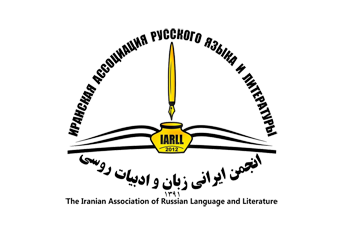THE LANGUAGE REPRESENTATION OF THE CONCEPT “MOTHERLAND” IN THE TEXT OF A LULLABY AS A GENRE OF PEDAGOGICAL DISCOURSE
DOI:
https://doi.org/10.61186/iarll.23.8Keywords:
Concept “Homeland”, Lullaby, Speech Influence, Addressee, AddresserAbstract
The article is devoted to the identifying ways of the linguistic representation of the concept of “homeland” in the texts of lullabies. The concept is understood as a mental entity that reflects not only the totality of the most significant features of an object, but also ideas, associations, and experiences that are associated with it. The relevance of this study is determined by the fact that the analyzed concept “homeland” is undoubtedly one of the basic concepts of many languages, since it reflects the socially significant relationship between a person and his place of residence and, as a consequence, the cultural values inherent in a particular society. The key nature of the concept “homeland” in the conceptual sphere of the Russian language is evidenced by the prevalence of this concept in the texts of lullabies, with which a person’s acquaintance with the world begins.
Extended abstract:
The article is devoted to identifying the ways in which the concept of "homeland" is linguistically represented in lullabies. The concept is understood as a mental entity that reflects not only the most significant features of an object, but also ideas, associations, and experiences associated with it. The relevance of this study is determined by the fact that the analyzed concept of "homeland" is undoubtedly one of the basic concepts of many languages, reflecting the socially significant relationship between a person and their place of residence and, as a consequence, the cultural values inherent in a particular society. The research hypothesis is formulated as follows: the concept of "homeland" has different linguistic representations in lullabies due to the evolution of lullaby lyrics. There are generally accepted methods for studying national concepts, including the study of dictionary definitions representing the concept in the Russian language, the study of the polysemy of the word that nominates the concept, the analysis of phraseological units that include the concept being studied, and the analysis of folklore and literary texts to identify nationally specific features in the concept. This study examines the linguistic representation of the concept of "homeland" in lullabies from this perspective. The scientific novelty of this study lies in the examination of changes in the linguistic representation of the concept of homeland due to diachronic and synchronic aspects of lullabies. The progress of the study allows us to draw several conclusions. The emergence and long existence of lullabies as a song genre is due to their pragmatic nature, with performance lasting until the child falls asleep. This explains the vast volume of folklore texts of lullabies in linguistic culture. Initially, lullabies were sung by peasant women who used simple plots to describe the world around them. The importance of lullabies as a cultural component has not lost its significance over time. The texts of lullabies acquired authorship and a more complex artistic style. The concept of "homeland" unfolds in the texts of author's lullabies through the nomination of family relationships, everyday objects, and descriptions of the area. Author's lullabies are distinguished by complex semiotic connections with folk traditions, based on nurturing a respectful attitude towards family and place of residence. A distinctive feature of author's lullabies is the presence of figurative and expressive means that convey the concept of "homeland". Through the linguistic representation of the concept of "homeland" in lullabies, children are introduced to the cultural values of society.
Downloads
Published
How to Cite
Issue
Section
License
Copyright (c) 2023 Issledovatel'skiy Zhurnal Russkogo Yazyka I Literatury

This work is licensed under a Creative Commons Attribution 4.0 International License.
![]()
"Creative Commons Attribution 4.0 International (CC-BY 4.0)"


